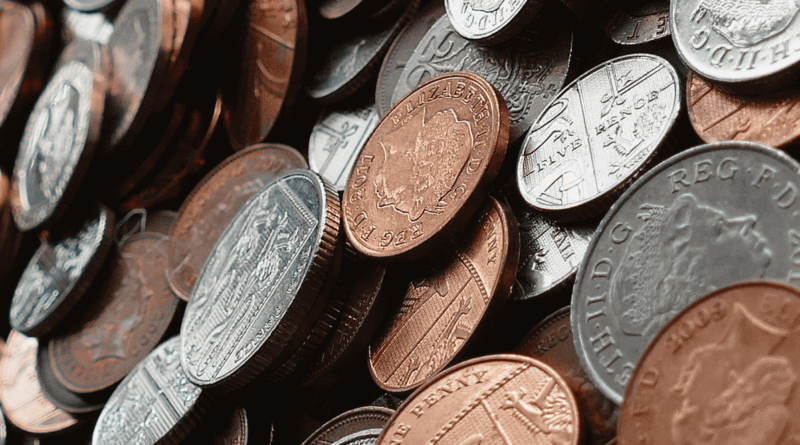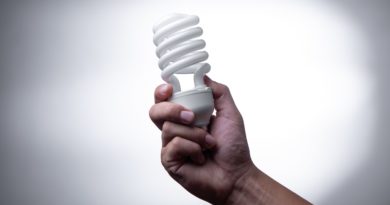20 Tips on How to Save Energy
Besides switching to a cheaper energy tariff, the best way to save money on your energy bills is to get smart with how you consume energy.
To help you make your home more energy efficient, we’ve created this list of 20 tips on how to save energy. Applying even just a few of these different methods can still make a big difference on your energy bills.
Manage your consumption with a smart meter
With a smart meter, you can monitor your energy consumption in near real-time, thus allowing you to make decisions about where to cut back and make changes in how you use energy.
With a smart meter, you’ll get a free In-Home Display which is the device that shows you exactly how much energy you’re using.
The deadline for the UK smart meter rollout has been pushed back to 2024. To book a free installation in the nearer future, you should contact your energy supplier.
Use a smart power strip or smart plug adaptor
A variety of devices can go into standby mode. Between phone chargers, TVs, dishwashers, washing machines, microwave ovens, computers, printers and more, you may have up to 50 devices in your house on standby mode (also called ghost mode or vampire power) in a day.
A smart power strip or plug adaptor knows when to not consume electricity for equipment in standby mode. It also allows you to select which items you want to turn off or on at any time. For the average household, using a smart power strip could save around £150 per year.
Replace your light bulbs with energy-saving bulbs
By replacing your light bulbs with LED lights, you can save nearly a third on your lighting costs. These bulbs use around 90% less energy than incandescent bulbs. They will also last up to 10 or even 20 times longer, meaning you won’t have to worry about changing them as often.
To further save energy, it’s also best to turn off the lights when you leave the room.
Use the microwave to reheat your food
Microwave ovens heat up your food much quicker than conventional ovens. They work by sending microwave radiation through the food. Unlike ovens, they heat just the object rather than also the air around it.
Keep your fridge and freezer at the right temperatures
You should set the temperature in your refrigerator between 2°C and 3°C. Your freezer should be set at -18°C to run at maximum efficiency.
We also recommend that you defrost food in the refrigerator, as the frozen food will help to cool down the fridge. If you can reach behind the fridge, it’s also best to clean the coils once a year.
Only boil the amount of water that you need
Tea drinkers in the UK could save a total of around £1 million per day just by boiling what’s necessary. For your next cup of tea, don’t boil a full kettle. Only boil the amount of water that you need. Any more, and you’re wasting not only money and energy, but time as well.
Wash clothes at lower temperatures
Wash your clothes at 30ºC. Nearly three quarters of the electricity used to wash clothes is for heating the water. Modern detergents are made to wash at lower temperatures, so you don’t need to worry about your clothes not being clean after washing in cooler water.
Washing your clothes at a lower temperature will not only save energy by keeping your boiler from having to work overtime — it will also prevent your clothes from shrinking and ensure that colours don’t fade as quickly.
Leave your clothes to air dry
Tumble dryers are one of the worst energy guzzlers in the home. The best way to save energy is to hang your washing to dry. If the weather doesn’t permit you to hang it outside on a line, you can still hang it inside on a drying rack.
If you do use a dryer, you should make sure to clean the lint filter after every two to three uses. This will ensure that the dryer runs more efficiently, thus helping to save electricity.
Invest in a smart thermostat
With a smart thermostat, you have more control over your home heating. It uses a combination of scheduling, GPS and sensor technology to know when to turn the heat up or down.
Companies that sell smart home devices, such as Hive and Nest, have reported that by using a smart thermostat, customers can reduce their cooling costs by nearly 15% and their heating costs by around 10%.
Turn down your thermostat
If you want to shell out on a smart thermostat, just turning down your regular thermostat by even one degree Celsius could save you around £75 per year, according to The Energy Saving Trust.
You should also remember to completely turn off the heating if you leave your home for an extended period of time.
Turn down the thermostat on your hot water tank
For regular boilers, lower the thermostat on the hot water tank. Producing scalding hot water that later has to be cooled back down to a comfortable temperature is simply a waste of energy.
Take showers rather than baths
To save energy, it’s best to take a five-minute shower rather than a bath. To save even more energy, you can also install a low flow shower head.
If you want to know how much hot water you use during a typical shower compared to a bath, plug the drain next time you shower to see how full the tub gets.
Insulate your hot water cylinder
Insulating your hot water cylinder plays a crucial role in ensuring your heating system runs effectively. Luckily, insulating the cylinder is easy to do. All you need to do is fit it with a water cylinder jacket. It’s best to buy a jacket that is at least 80mm thick. This will generally save the average home around £20 per year on energy bills.
Insulate your home
Insulating your home is one of the most effective ways to save energy. Installing insulation in the walls, loft and floor can significantly reduce the amount of heat escaping, and thus the amount of energy wasted.
New roof insulation will generally cost around £300 and reduce your energy bill by just over £100 per year. While installing or upgrading your home insulation may not be the cheapest immediately, you will likely earn this money back within a few years time.
Draught-proof your house
Make sure that no warm air is leaking out and that no cold air is getting in through gaps in areas such as window seals, doors, chimneys and letterboxes. By saving warm air, you’ll require less energy to heat your home.
You can easily stop cold air from passing through cracks in your doors with a draught excluder. Hiring a professional to draught-proof your entire home could cost upwards of £200. However, it’s easy (and much cheaper) to buy the supplies and close up these gaps yourself.
Glaze your windows
Get double or triple glazing installed in your house. While this is one of the most expensive energy upgrades, it will reduce your energy consumption and save you money on your bills. For a much cheaper option, you could try installing magnetic secondary glazing yourself. There are several grants available to help homeowners cover the cost of certain energy-efficient upgrades.
Avoid blocking your radiators
Free up the space in front of your radiators. By making sure there is enough space between the radiators and any furniture, the currents can easily flow around the room, thus heating it much faster.
Radiators hidden behind long curtains will also lead to energy loss, as the heat will then be funneled out the window through the glass.
Bleed your boiler once a year
Bleeding a boiler (also called bleeding a radiator) makes it run more efficiently, therefore consuming less energy and saving you money on your heating bills.
It’s best to bleed your boiler at the beginning of the heating season to be ready for the winter.
Upgrade and service your boiler
If you have an old-style non-condensing boiler, you should consider upgrading to a newer conventional one. According to the Energy Saving Trust, you could save up to £340 a year by switching to a new, condensing boiler for your home.
It’s also best to get your boiler serviced once a year to ensure that it is working properly and at maximum efficiency. This will also reduce the chances of it breaking down. If you don’t service your boiler annually, the warranty could even be voided.
Only buy appliances with an A- rating or higher
Energy ratings run from A+++ to G. An appliance with an A+ rating consumes around 40% less energy than an equivalent B-rated model. While the initial cost may be a bit more expensive, the additional savings will usually cover the cost in just one or two years time.
Click here for more stories and others like this.




